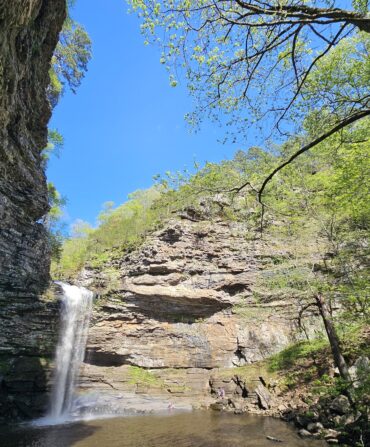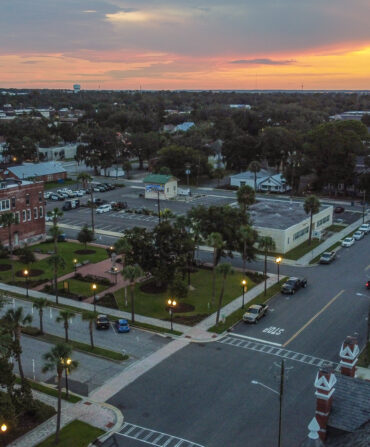If the name of the hotel hadn’t tipped us off, it still wouldn’t have taken long to pick up on the theme. There were the preserved cacao pods tastefully accenting our room, shaped like furrowed footballs in combinations of yellow, red, and green. At breakfast, a choice of coffee, tea, or the most decadent option, a pot of 70-percent-cocoa liquid chocolate melted into hot milk. After breakfast one day, my wife and I strolled through a sun-dappled forest of cacao, where pods protruded from unexpected parts of trees: an orchard by Dr. Seuss. The dinner menu provided more clues: a cacao-and-Prosecco Bellini; starters of cacao gazpacho or chicken liver parfait dotted with little jewels of dark chocolate ganache; bread-dipping sauces of chocolate and balsamic vinegar, or cacao-nib butter; and for the main course, savory cacao nibs finding their way into everything from duck confit to Angus tenderloin to fillet of dorado. Spotted a pattern yet?
“Chocolate,” the journalist Rowan Jacobsen wrote, “is our most complex food.” It packs more antioxidants by weight than red wine, triggers the release of endorphins, and contains phenylethylamine, an amphetamine-like compound that also sloshes around the brains of those falling in love: potent stuff. Why shouldn’t chocolate also get its own boutique hotel? And so Hotel Chocolat—a British chain of more than sixty high-end chocolate shops and a thriving mail-order operation—opened its first actual hotel, Boucan by Hotel Chocolat, two years ago, on the lush and rain-forested island of St. Lucia. The resort occupies a patch of the island’s oldest cocoa plantation, Rabot Estate, and is passionately dedicated to its cause: resuscitating the once-storied chocolate trade in St. Lucia, while taking full advantage of the allure of its signature food.
Of course St. Lucia has plenty of charms of its own. The island’s southwestern shore, near Soufrière, looks like Never-Never Land. The hulking twin seaside peaks known as the Pitons anchor the landscape; UNESCO has declared them and their surroundings a World Heritage Site (and one of the peaks, Petit Piton, dominates the rapturous view from the hotel’s open-air restaurant, perched on a hillside 1,000 feet above sea level). Dramatic slopes sculpted by ancient volcanoes burst forth in a riot of greenery. It seems as though on any given morning you could press a few seeds into the rich soil, fetch a lawn chair and a picnic basket, and watch a jungle take shape by sundown.
Despite the company’s name, its top brass never intended to operate a real hotel, much less spearhead a Caribbean chocolate revival. That is, until a customer sent one of the founders, Angus Thirlwell, a 1920 edition of a book called Cocoa and Chocolate: Their History from Plantation to Consumer. The volume chronicled how chocolatiers were once deeply immersed in the growing of cacao—that word describes the trees, pods, and beans, though St. Lucians usually call them all “cocoa”—and how the West Indies once played a starring role in its production. (Nowadays, most chocolate makers buy beans from middlemen; most of the world’s cocoa grows on industrial-scale farms in places such as Ivory Coast and Ghana, and then gets blended with cocoa from other sources and sold as a commodity.) “I literally didn’t put it down,” Thirlwell told me, when we first met at Boucan, a few weeks after the restaurant opened. “It was a complete revelation. It made me want to turn the clock back.”
Born in Newcastle, England, but raised in Barbados, Thirlwell is thin and wiry, with blondish-gray hair swept back from his forehead; his energetic manner and elfin features suggest a combination of Richard Branson and Willy Wonka. He’s like a chocolate evangelist; I’d never before heard anyone mention terroir when speaking of chocolate. In 2006 when he and his business partner, Peter Harris, got wind that St. Lucia’s Rabot Estate, a semi-abandoned 140-acre plantation that had grown cacao since 1745, was for sale, they quickly snapped it up and hatched a plan: to bridge the gap between growing cacao and making artisanal chocolate. And at the same time, to position St. Lucia as an agritourism getaway that would lure chocolate connoisseurs the way Napa draws wine lovers and Kentucky draws bourbon drinkers. Their resort now has fourteen spacious lodges done up with draped four-poster beds, dark-chocolate-hued wooden floors, and shutters that open to the sultry air. Another hedonistic touch: a shimmering infinity pool below the restaurant, with the same Edenic view.

Photo: Peter Frank Edwards
Breakfast of Champions
Mornings at Boucan begin with fresh island fruit and cups of liquid chocolate.
But beyond opening a sort of chocolate theme park, Hotel Chocolat aimed to revitalize cacao farming across the entire island. Through its guiding principle of “engaged ethics,” the company sells St. Lucian farmers its hybrid Trinitario cacao seedlings at subsidized cost, dispenses free growing advice, and guarantees to buy their entire harvest at an above-market price. “You can have half an acre, you can have a thousand acres,” says Judy Buckley, the hotel’s head of guest relations. “There’s a place for everybody.”
By now, more than 150 farmers are on board. Before his company arrived on the island, said Thirlwell, “a lot of these were not picking their cocoa. It was not worth their while. They were leaving their pods to rot on the trees. Now the vast majority of cocoa on St. Lucia is coming to Rabot Estate.” The next phase: a small, tour-friendly chocolate factory. Once it opens, the company will no longer need to ship St. Lucian beans to its factory in England to transform them into the indulgent finished product.
Along the way, Hotel Chocolat blazed another trail: It was the first to specifically market St. Lucian chocolate as such, instead of generically blending in island cacao with beans from other places. To an aficionado, this matters. “We’re trying to catch up with the wine world,” Thirlwell said, and that became clear when we joined him for an impromptu chocolate tasting after lunch. A server brought two rectangular white plates, each bearing about a dozen small chunks of chocolate. First, the company’s Island Growers 70%. We each took a small bite.
My observation: Pretty darn good.
Thirlwell’s take: “A balance of red fruit, acidity, and freshness, with deeper notes of leather, black olives, and sort of an oakiness as well. It’s very long in the mouth. More like a Shiraz.”
Well, sure, now that you mention it. We sampled another: the Rabot Estate 65%. Me: Yum!
Thirlwell: “Red fruits are still there. Almost like citrus or mango. It’s a bit spicier as well. Dried-fruit flavor notes; dried plums, a bit.
“It’s forthright chocolate,” he added. “This is not shrinking-violet flavor here. We try to leave some of the wildness in.”

Photo: Peter Frank Edwards
Soaking up the hotel’s tropical surroundings.
It would be a minor crime to visit St. Lucia without taking part in Hotel Chocolat’s Tree to Bar tour, which is open to hotel guests and visitors alike. It’s a crash course in all things chocolate, and the head of the plantation’s nursery, a native St. Lucian by the name of Cuthbert Monroque, turns the morning into something like interactive theater. He has us twist ripened pods off the tree and points out vanilla vines entwined among the cacao branches—nature’s version of a chocolate-vanilla swirl. He helps us graft “scions”—cuttings from mature trees—onto seedlings, which will get transplanted into the groves once the grafts take. After talking us through each phase of the cacao-to-chocolate metamorphosis, he makes sure we’re keeping up: “You get me, chief?”
Monroque tells us how tiny cacao flowers are pollinated mostly by midges, gnatlike flies that live in the undergrowth; a world without midges would be a world without chocolate. We see fresh cacao beans fermenting in wooden boxes under layers of banana leaves. He cuts open a ripe pod to reveal clusters of off-white mucilage, like oversize corn kernels, which protect the beans inside them. The hotel purees the sweet-tart mucilage and mixes it with vodka and soursop juice to make cacao martinis. Spent pods get composted to fertilize the groves. Hotel Chocolat, so to speak, uses every part of the buffalo.

Photo: Peter Frank Edwards
Earthly Delights
Manager Bernabe Alexander with the latest crop of cacao beans.
In the second part of the tour, we make primitive chocolate bars, frantically mashing together cacao nibs, cocoa butter, and sugar with a heated mortar and pestle while Monroque eggs us on: “Swivel and grind, swivel and grind!” Once they’re poured into molds and chilled solid, we sample our creations. Amateurs though we are, they taste like no chocolate we’ve ever had: subtly sweet but also earthy, vegetal, like something fresh off the land.
My favorite time at Boucan comes after nightfall, when the place seems to especially work its magic. Lights wink on in the trees. An orchestra of tiny frogs bleats and trills in every direction. A warm breeze rustles the fronds. You can look up from your open-air shower and watch clouds race past the moon. Oil lamps appear on tables at the restaurant. You can’t really see Petit Piton now, but you can still sense it, a dark presence outlined by stars. The diners are mostly couples, women in cocktail dresses, lots of smiles and long looks. The phenylethylamine seems to be running especially high.









